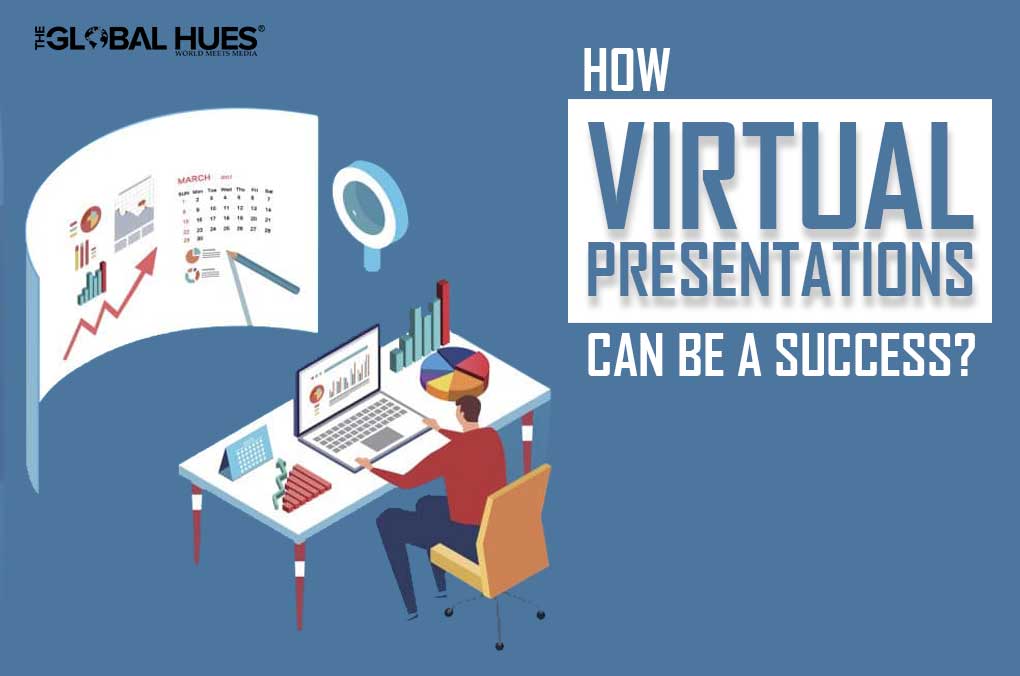Virtual presentations are fast becoming a staple and a fresh way of presenting. In the past two years, we have seen a steady rise in virtual presentations, be it a team meeting, formal training, conference presentations, or any other meeting. The pandemic has required the switch to a virtual world.
A virtual presentation should be prepared by keeping some basic questions in mind:
- What is the aim behind the presentation?
- Who is the target audience?
- What information should be presented, and what should be avoided?
- How to fit all the information into a meaningful sequence?
- How to do everything in sync with time?
In the course of these two years, we have seen people giving phenomenal presentations on virtual platforms, yet there have been some cases where people have failed terribly in a virtual setting. Here are some reasons:

-
It’s Not Just Virtual
Some people do virtual presentations thinking ‘It’s just virtual’. They believe that people’s expectations are lower for a virtual presentation, which leads them to underperform as they don’t feel the need to prepare or practice as much as they would have for a face to face presentation.
-
Technical Difficulties
No matter how well you have prepared for the presentation, technical issues like computer crashes, or issues in the microphone or camera can completely derail an otherwise successful virtual event. Even worse, it can portray an unprofessional image of your company in the eye of the audience.
In any virtual presentation, it’s very important to formulate a clear core message. As many participants are sitting at home and are often unseen, their attention can wander quickly as compared to a face to face event.
-
Distracted Audience
The biggest hurdle in any virtual presentation is distracted attendees. In a world where Google, Instagram, and email inboxes are just a click away, it’s very difficult to ask for the undivided attention of your audience. Moreover, many attendees believe in multitasking like responding to emails, doing research work, completing other pending tasks, and many more— while they view a presentation.
-
Lack of Engagement from The Audience
Another big challenge while doing a virtual event is the lack of engagement from the audience. All the above-mentioned factors like technical issues, lack of experience, and constant distractions lead to disengagement. The best solution for this would be to involve the audience in the event. Constantly checking in with the attendees and taking real-time feedback can improve engagement.
Here’s how you can create and deliver engaging virtual presentations:
-
Don’t Shrink Your Virtual Presentation At All!
Although studies show that the attention span of people is reducing, shrinking something doesn’t always make a virtual presentation potent. Every speaker shrinks their presentation to meet the constantly reducing attention spans. However, doing this makes it bland. However, you can always create a window for ‘key takeaways.’ End your presentation by presenting key takeaways in the form of bullet points to add extra points to your presentation.
-
Speak What People Like
Try to speak on the topics that excite your target audience. In today’s digital climate, it’s really important to construct the message in such a way that it clearly connects with the target audience. Always consider how you want your audience to feel: Informed? Supported? Inspired? Excited? This is a vital step in conceptualizing the strategy of the presentation.
-
Always Plan Your Presentation
The topmost reason why any virtual presentation fails is lack of planning which often results in:
- Unnecessary presentations
- Meaningless Content
- Confusion about the motive behind the presentation
- Jumbled presentations that ramble, are boring and difficult to follow
- Presentations that start and end late
- Too many presenters which makes it confusing for the audience to hear each presenter well
- Too much marketing and sponsorship info that eclipses the main presentation
Always be passionate about presenting in front of your audience. A little passion always goes a long way. If you plan well, your audience will sense it and eventually feel closer to you.
-
Always Check The Technical Aspects
Before starting the presentation, always test your equipment. If you find any issue, correct it immediately. If everything is at its place, it will boost your confidence.
Sometimes technical difficulties are caused due to lack of experience. You can overcome this challenge by hosting as many webinars as you can. This will help you gain more experience and knowledge of doing a successful virtual presentation.
-
Face The Camera
This is perhaps one of the hardest adjustments when you present virtually as you always look at the faces on the screen. When you do that, you break eye contact with the audience. Always look at the camera. Also, always place the camera at eye length. No one wants to look at your nose in the entire presentation.
FINAL WORDS
Considering the current circumstances, virtual presentations are not going away anytime soon. No matter how difficult it is to present virtually when compared with a face to face interaction, virtual presentations do serve several benefits which means many companies will continue to use them.




